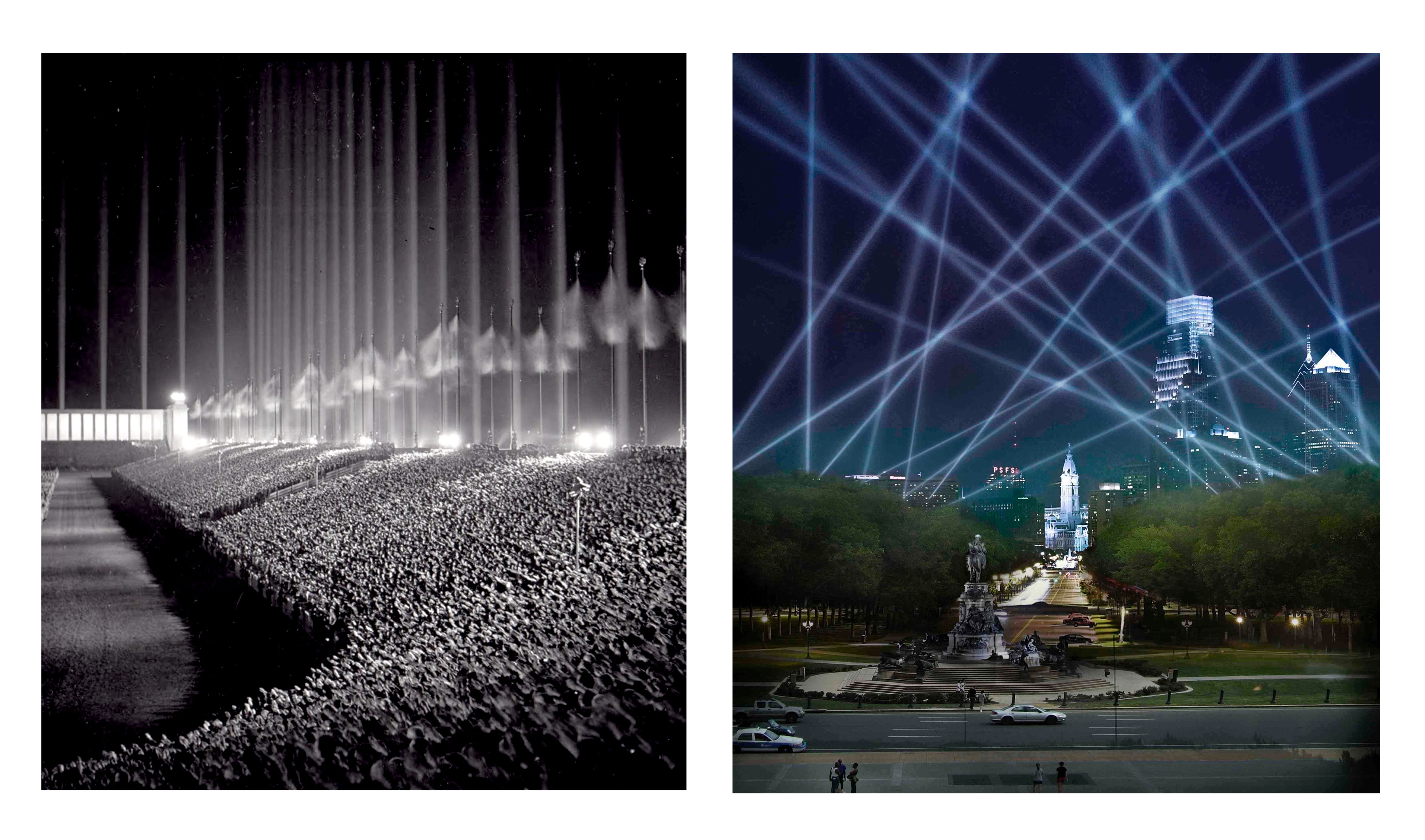Selected Topics in Architectural History and Theory: The Monument, and other Architectures of Time

(Left) The Cathedral of Light (Lichtdom) Rally: Nuremburg, Nazi Germany Albert Speer, 1936.
(Right) Open Air (relational architecture) Benjamin Franklin Parkway, Philadelphia, USA Rafael Lozano-Hemmer, 2012
ARC3310H S
Instructor: Richard Sommer
Meeting Section: LEC0101
Friday, 9:00 AM - 12:00 PM
The monument’s rightful function in societies aspiring to democracy is to open history to change, reshape public memory, and provide a spatial, architectural medium through which to struggle though our politics. Instead, the monument is still too often proffered as a timeless object fixing the past and embodying the hegemonic power of persons, places and things. Taking the contested status of monuments as a given, this seminar will explore the monument as a timely, prospective art that takes many diverse forms beyond fixed, permanent artifacts, and focus on practices of monument-making that contend with the mobile, transient and intersectional nature of modern societies.
The recent uprising of consciousness concerning the legacies of colonialism and related regimes of racism in the United States, Canada and elsewhere has hastened a much-needed public discourse on the history, meaning and position of monuments in the spaces of society. Black Lives Matter and other anti-racism movements, and the many conflicts and equations between indigenous understandings of land and sovereignty and those of European settlers, have brought needed attention to the troubled creation, form and counter-democratic legacy of a wide array of monuments. To establish an historical background to current debate and approaches, early parts of the course will expose the unusual underpinnings of modern monuments in ‘America’ over the past century, including both well-known monuments legitimizing the America’s ‘manifest destiny,’ ‘exceptionalism,’ and colonial settlement of the ‘frontier,’ such as Devils Tower (Na Kovehe trans.: Bear Lodge), Mount Rushmore, The St. Louis Gateway Arch (formerly the Jefferson National Expansion Memorial and Museum), and lesser understood examples such as the Hudson Fulton Celebration and the Appalachian Trail. Later parts of the course will focus on more recent, experimental developments, and raise questions about how monuments might enable new forms of community and social engagement.
Seminar Structure
Following from the proposition that the monument is time-full, the course will engage students in case-based studies and readings organized around a series of overlapping concepts of time that underlie the creation of modern monuments, including deep/geological time, linear/historical time, technological/mediated time and memory/dream time. We will expand the class of objects and sites typically consider as fulfilling the function of a monument, beyond statuary and other quasi-classical markers, to include more performance-based phenomena such as trails, pageants, fairs, festivals, house museums and museological/heritage zones. We will examine how certain monuments intertwine landscape, infrastructure, urbanization and technology, and study the contemporary, critical approaches taken by designers and artists such as Nona Faustine, Rafael Lozano-Hemmer, Beverly Buchanan and Krzysztof Wodiczko.
Along with assigned readings, members of the seminar will be asked to independently identify monuments, subject them to a cultural “stress test,” and develop analyses and proposals for their potential reform. Students from all graduate programs interested in the nexus between art, design and politics, and in questioning the purpose, place and value of practices associated with monument-making are encouraged to join the seminar.

